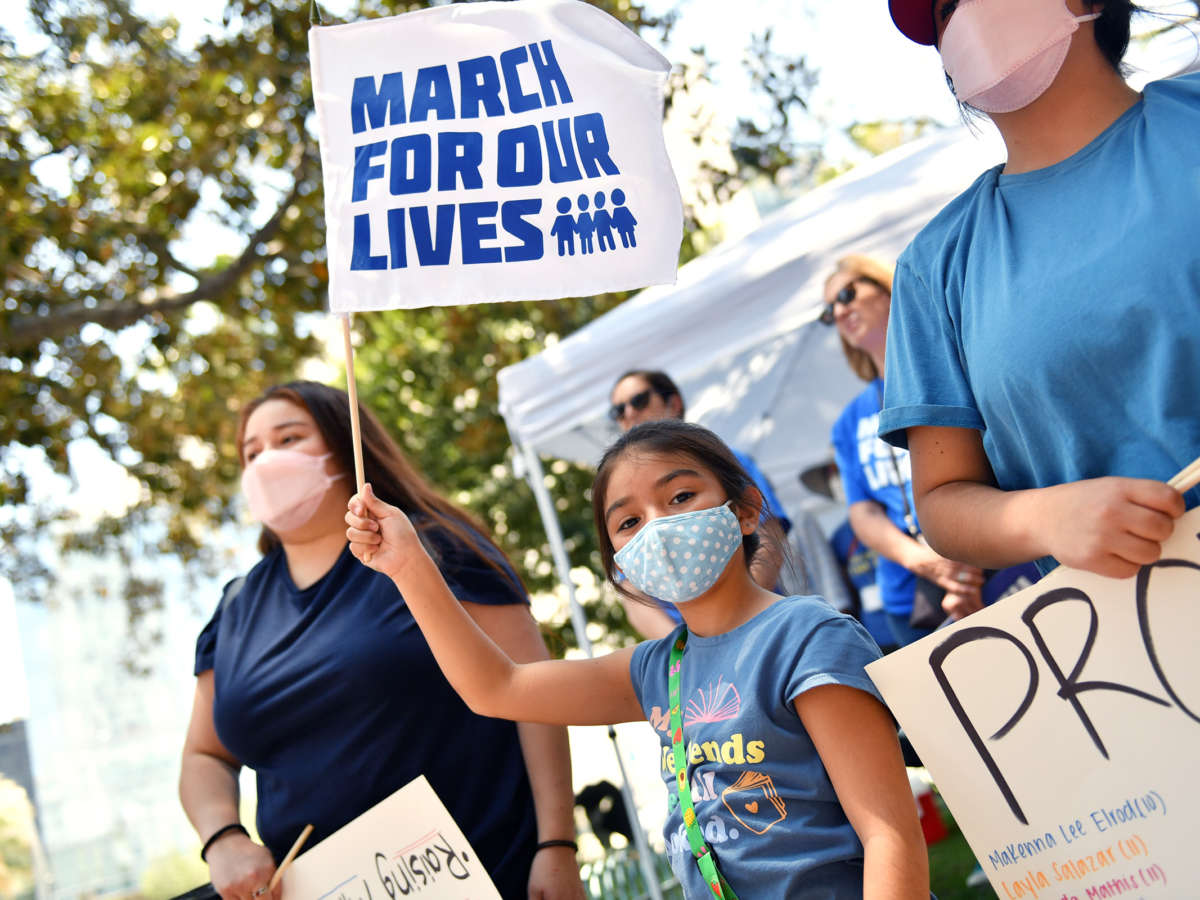Schools have never been havens from the threat of policing. But recent narratives created by politicians and police departments falsify school violence as astronomically high and inaccurately suggest more police on campus as the only remedy, even as campaigns have pushed over the past two years to remove police from schools. The narratives cite anecdotal reports of violence in schools following students’ return to physical classrooms after the quarantine but fail to contextualize the violence or its causes and rarely mention that crime levels in schools are far below levels in the 1990s and 2000s. Instead of assuming more police are necessary, decision makers should be consulting students and educators — especially those of us in heavily policed schools — about solutions.
I saw my friend slammed on a cop car in middle school. In high school, I witnessed students get pepper-sprayed by police in common areas between classes. When I was a freshman, there were one or two police officers on campus; today, four or five officers with security dogs patrol us. Their presence creates an intense atmosphere in which students wonder what caused the school to hire them.
Arrested Learning, a national survey published in April 2021, asked students what makes them feel safe when physically attending school. Eighty-four percent referenced their friends; 63 percent answered teachers; 16 percent said police. Additionally, one-third of respondents felt police targeted them because of their identities.
Students need investments in programs and resources that help us focus while learning, not more police. The real question: How can students voice their concerns and pressure school districts to make these changes? Local organizing around school board elections has proven the answer.
Currently, school boards play a key role in deciding whether schools have a police presence. We’ve seen police officer associations fund pro-police school board candidates in Nassau and Suffolk counties in New York. In El Paso, Texas, the El Paso Municipal Police Officers Association and Sheriff’s Officers Association helped elect a former police officer.
School boards rank among the best avenues to challenging on-campus police presence. Yet a 2020 National School Boards Association report revealed “discouragingly low” school board election turnout numbers (between 5 to 10 percent). That year in my home district (the fifth-largest school in the U.S. — Clark County, Nevada), only 33 percent of the electorate participated in school board elections; the winning margin was just 4,500 votes.
Students can impact the presence of police in their schools by organizing through school boards effectively. The Center for Popular Democracy Action’s new toolkit analyzes how school boards affect students’ lives and how to use them to challenge injustices like school policing.
Here’s the root problem with the police: They can’t prevent violence but can only respond to it, often with more violence. Our schools should foster creativity, healing, and joy — and work to prevent harm.
School boards wield immense power. Far right conservatives and police interests understand this, but they aren’t alone. Community activists have challenged racist and classist policies through public school boards for decades. Recently, effective organizing examples have played out in places like Milwaukee, Wisconsin, where actions by Leaders Igniting Transformation led the Milwaukee Board of School Directors to unanimously pass a resolution ending their contract with Milwaukee’s police department.
As a fellow at Make the Road Nevada, my classmates and I pressured our school board to create a student section at meetings to ensure a dedicated platform for elevating our voices. We’re pushing hard to remove police from our schools, add more counselors and support candidates who back our priorities. It isn’t easy, but we’ve won some victories, including helping elect our endorsed candidate to the school board this summer, and keep building a solid foundation to win more.
Nationally, students have spent the past two years dealing with a pandemic that has compounded the existing troubles in our private lives. We need more social workers, counselors and teachers who care about us in order to get through such a turbulent period. My high school had a social worker before Las Vegas began its COVID lockdown. Post-lockdown, I haven’t seen them around, and it appears additional police officers took their place. That’s a tradeoff that has benefited no one but the police.
Make the Road Nevada Action also helped create “Youth Mandate for Education and Liberation: A Mandate to Guide Us From Crisis to Liberation,” which details how police and security in schools don’t make students feel safe and instead, often lead to harmful interactions. It also shows that students overwhelmingly prefer that school districts focus on providing more student resources and support over police and security. In the Youth Mandate, youth groups within the Center for Popular Democracy Network demanded that schools divest from police to fund services and education programs that prioritize restorative practices over harsh discipline.
Here’s the root problem with the police: They can’t prevent violence but can only respond to it, often with more violence. Our schools should foster creativity, healing, and joy — and work to prevent harm. That’s impossible with hardline disciplinary actions and on-campus police militarization. We need resources that focus on students and position us to succeed. Obtaining those resources requires students, parents and everyone who cares about our well-being to organize around school boards.


